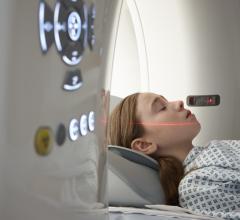October 23, 2007 - Hologic Inc. today announced that a study has been published online in the Journal of Bone and Mineral Research that used single-energy vertebral fracture assessment (VFA) exams to measure abdominal aortic calcification, concluding that “…a high level of abdominal aortic calcification (AAC) detected on VFA images is predictive of incident myocardial infarction or stroke among elderly Caucasian women, independent of other clinical CVD (cardiovascular disease) risk factors.”
The study, titled "Abdominal Aortic Calcification Detected on Lateral Spine Images from a Bone Densitometer Predicts Incident Myocardial Infarction or Stroke in Older Women," indicates that physicians should use the opportunity of a VFA scan to look for evidence of cardiovascular disease.
“Previous work has shown that it is cost effective to do VFA scans in many postmenopausal women to detect vertebral fracture, and prescribe osteoporosis treatment medication when such a vertebral fracture is seen.” says lead author, John Schousboe, M.D. of Park Nicollet Health Services in Minneapolis, MN. “This is particularly important in women, since two-thirds of women who died suddenly of coronary heart disease have no prior symptoms.”
“This study found that AAC had a similar predictive strength for cardiovascular disease (CVD) as the Framingham Point score. The Framingham Point score combines the traditional risk factors of total cholesterol, HDL, blood pressure, hypertension treatment and smoking to predict 10-year cardiovascular heart disease risk” says co-author Eugene McCloskey, M.D., of Sheffield University, UK. “Additionally, we found that this predictive ability of AAC was independent of the all of the traditional CVD risk factors we collected in the study.”
For more information: www.hologic.com


 July 25, 2024
July 25, 2024 








